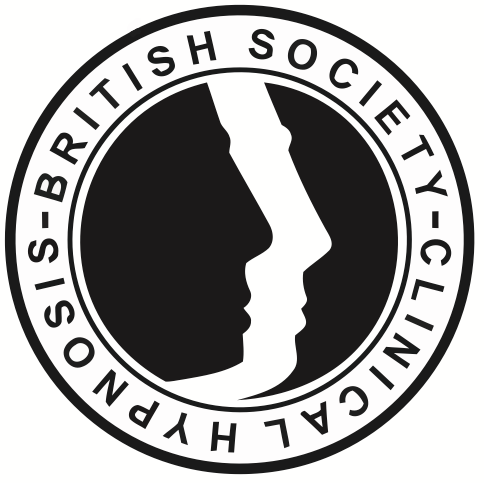Understanding and Coping with SAD (Seasonal Affective Disorder)
As the seasons change and winter sets in, many people experience a noticeable shift in their mood and overall well-being. For some, this change goes beyond a simple case of the “winter blues” and can be attributed to a condition known as Seasonal Affective Disorder (SAD). In this blog, we will explore what SAD is, its causes, symptoms, and effective coping strategies to help those who struggle with this condition.
What is Seasonal Affective Disorder (SAD)?
Seasonal Affective Disorder, often abbreviated as SAD, is a form of depression that follows a seasonal pattern, most commonly occurring in the fall and winter months. It is estimated to affect approximately 5% of the population, with symptoms typically peaking during the darkest, coldest days of the year.
Causes of SAD
While the exact cause of SAD is not fully understood, several factors contribute to its development. Some of the primary factors include:
- Biological Clock: Reduced exposure to natural light during the winter months can disrupt the body’s internal clock, leading to imbalances in the production of melatonin and serotonin, two neurotransmitters that play a crucial role in regulating mood.
- Genetics: There is evidence to suggest that genetics may predispose certain individuals to SAD, especially if a family member has experienced the condition.
- Serotonin Levels: Low serotonin levels are often linked to depression, and the reduced exposure to sunlight can lead to decreased serotonin production in the brain.
- Melatonin Levels: Increased darkness during winter days can lead to elevated melatonin production, contributing to feelings of lethargy and fatigue.
Symptoms of SAD
SAD can manifest in a variety of symptoms, which may vary in severity from person to person. Common symptoms include:
- Depressed mood: Pervasive feelings of sadness and hopelessness.
- Loss of interest or pleasure: A decreased interest in activities that were once enjoyable.
- Fatigue: Persistent tiredness, despite getting enough sleep.
- Changes in appetite: Increased cravings for carbohydrates and weight gain.
- Difficulty concentrating: Struggles with focus and decision-making.
- Social withdrawal: Avoidance of social interactions and isolation.
- Sleep disturbances: Oversleeping or insomnia.
- Physical symptoms: Such as headaches or body aches.
Coping Strategies for SAD

Living with SAD can be challenging, but there are various strategies to help manage its symptoms and improve your overall well-being. Here are some effective coping strategies:
- Light Therapy: Light therapy, or phototherapy, involves exposure to a bright light that mimics natural sunlight. This treatment is often the first line of defence against SAD and has been found to be effective in many cases.
- Medication: Antidepressant medications, such as selective serotonin reuptake inhibitors (SSRIs), can be prescribed for those with severe SAD symptoms.
- Regular Exercise: Physical activity has been shown to boost mood and alleviate symptoms of depression, including those associated with SAD.
- Diet and Nutrition: Maintain a balanced diet, and consider consulting a nutritionist to address carbohydrate cravings and weight gain.
- Mindfulness and Therapy: Cognitive-behavioural therapy (CBT) and mindfulness techniques can help individuals cope with negative thought patterns and develop healthier ways to manage their emotions.
- Social Support: Engage in social activities, stay connected with friends and family, and consider support groups for individuals with SAD.
- Clinical Hypnotherapy: Hypnotherapy can assist in coping with SAD in the following ways:
Addressing Negative Thought Patterns: SAD often involves a pattern of negative and self-defeating thoughts, such as feelings of hopelessness and worthlessness. Hypnotherapy can help individuals recognize and reframe these thought patterns. Through guided relaxation and focused attention, a hypnotherapist can guide the individual into a state of heightened suggestibility, allowing them to replace negative thought patterns with more positive and constructive ones.
Reducing Stress and Anxiety: Hypnotherapy can be effective in inducing a deep state of relaxation, which, in turn, reduces stress and anxiety. Stress and anxiety can exacerbate SAD symptoms, and by helping individuals manage these emotions, hypnotherapy can make it easier to cope with the challenges of the season.
Enhancing Coping Strategies: Hypnotherapy can be used to help individuals develop and enhance coping strategies for managing SAD. This might involve using visualization techniques to picture themselves in more positive and enjoyable situations or developing skills to better handle stressors related to the condition.
Boosting Mood and Motivation: Hypnotherapy can be employed to boost mood and motivation in individuals with SAD. Through guided imagery and suggestion, individuals can be led to envision themselves feeling more energetic, positive, and motivated to engage in activities they might otherwise avoid during the winter months.
Improving Sleep: SAD often disrupts sleep patterns, leading to either excessive sleep or insomnia. Hypnotherapy can help individuals improve their sleep by teaching relaxation techniques and resetting their internal clocks to achieve better sleep-wake cycles.
Encouraging Self-Care: Hypnotherapy sessions can encourage self-care practices. Individuals may be guided to prioritize self-care, including maintaining a healthy diet, exercising regularly, and taking steps to manage their SAD symptoms effectively.
It’s important to emphasise that hypnotherapy should always be conducted by a trained and qualified hypnotherapist. When seeking hypnotherapy for SAD, it’s advisable to work with a licensed mental health professional who is experienced in using hypnosis as a therapeutic tool.
If you are interested in Clinical Hypnotherapy for SAD get in touch with Gail TODAY:

https://gailmarrahypnotherapy.com/contact/









2 thoughts on “Understanding and Coping with SAD”
How can employers and schools create a more supportive environment for individuals with SAD?
What a great question!
Employers can offer education and awareness programs for employees to reduce stigma and foster empathy for individuals with SAD as well as provide flexible work arrangements, quiet workspaces and open channels of communication.
Schools can educate staff and students about SAD and develop education plans for affected students. They can offer counselling services, peer support groups and create inclusive classrooms with alternative assessment methods. They can also implement anti-bullying initiatives (which should be standard) and prioritise sensitivity and flexibility when working with students with SAD. In both settings, maintaining privacy and confidentiality is essential to create a safe, supportive atmosphere for individuals with SAD.
Hope that helps!
Best wishes
Gail